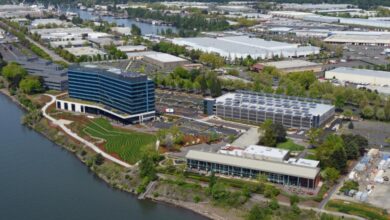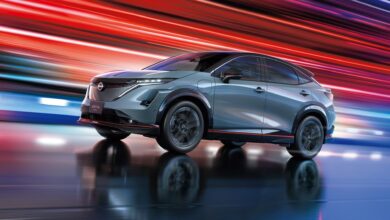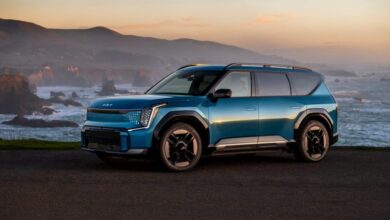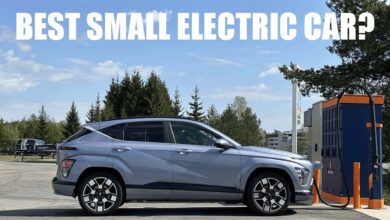With or Without Tesla, More E.V. Chargers Are Coming
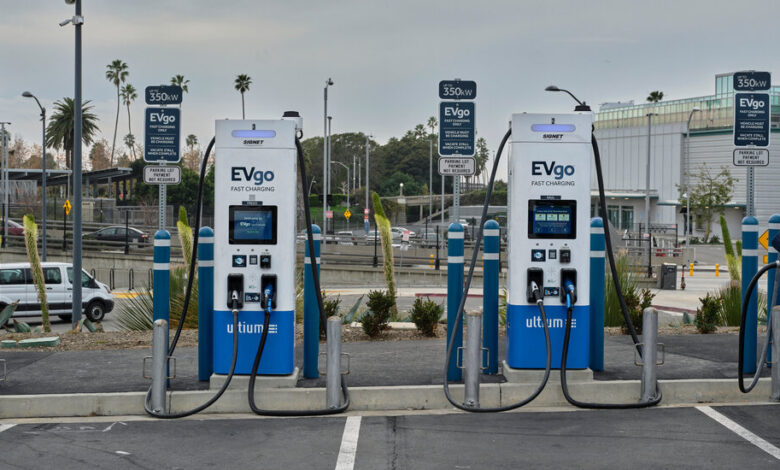
Last week, Tesla laid off most of its electric car charging team, raising doubts about the feasibility of the Biden administration’s ambitious E.V. expansion plans.
Though Tesla accounts for more than half of the fast E.V. chargers currently installed in the United States, and though it has continued to build them faster and cheaper than anyone else, the E.V. charging market may no longer need Tesla to lead it.
In fact, experts I spoke to believe the E.V. charging industry is set to expand quickly over the next few years. Let me explain why.
At first, Tesla’s move seemed like a blow to a sector that may seem like it’s struggling to grow despite the $7.5 billion investment from the bipartisan infrastructure law passed by President Biden in 2021. The administration’s goal is to build a network of a half million fast and slow chargers in the country by 2030, more than double what the U.S. has today. But roughly two and a half years after the bill’s passage only eight federally funded charging stations have opened in six states, according to government data.
Elon Musk, Tesla’s C.E.O., hasn’t explained why he decided to cut back on charger construction, but some analysts interviewed by my colleagues Jack Ewing and Ivan Penn said he had probably concluded that it would become harder to make money from charging as more companies entered the market.
As Ewing and Penn wrote, last year all major automakers selling cars in North America agreed to use the charging plug developed by Tesla, which has a reputation for being reliable and easy-to-use.
That leaves the question I set out to answer. What’s holding back the expansion of America’s electric charging infrastructure? Spoiler alert: The picture isn’t nearly as grim as it may seem.
“We’re not seeing a lag in process or progress,” Ellen Kennedy, a transportation expert at RMI, a clean energy think tank, told me. “I think that people have been taking a dim view of this without actually considering that what has been happening is amazing.”
Jumping through hoops
You might think Kennedy is being overly optimistic, but she’s not alone in thinking the U.S. is turning the corner on E.V. chargers.
My colleague Ewing, who has been covering automakers for decades, told me he has been hearing much of the same thing from experts. “A lot of people told me that the charger infrastructure has a momentum of its own,” he said. “Things are going up pretty fast.”
Including the federally funded program, the U.S. has added an average of about 2,800 fast and slow charging ports a month over the past year, according to government data. (A charging station can have several ports.) Many companies are excited, Ewing said, about the prospect of building out E.V. stations that can offer entertainment, dining and shopping options for drivers. That’s already happening in Norway.
The point of the federal government’s program isn’t simply to add more chargers to the network, but rather to guarantee there is an equitable distribution across the country, and to match charging infrastructure to demand.
“The charging networks, you know, just aren’t building these charging stations where there’s very little E.V. traffic,” Loren McDonald, the C.E.O. of EVAdoption, an industry data and analysis company, told me. “But it’s a chicken and egg thing, and that’s what this program is trying to solve.”
In a statement, the Joint Office of Energy and Transportation, which is responsible for the federal charger program, said, “We want to get it right to ensure we have a charging network that makes it easier for Americans to find a charge than to fill up on gas.”
The obstacles remaining
Still, coordination between the federal government, states and utilities can take time. Most of the money for E.V. chargers is federal, but states are the ones that need to spend it. And then, utilities must connect charging stations to the grid.
Utilities often delay projects. It can take months after a station is built for the local utility to connect it to the grid. A shortage of transformers and switch gears can add another layer of delays.
The good news is that every state, as well as Puerto Rico and Washington, D.C., have presented plans for how they will spend federal resources. But staffing can be an issue. States with high E.V. adoption, like New York, have more experienced staff handling charger expansion efforts than states where fewer people own electric cars, such as South Carolina.
The layoffs at Tesla won’t help any of this go faster. But the company picked up only 14 percent of the contracts from the federal charger program so far, according to EVAdoption. Dozens of competitors, like Francis Energy and Love’s Travel Stop, are working to build the rest.
Overcoming these obstacles is taking time. But all the experts I’ve spoken to expect that to change soon.
Right now, federally funded new stations are opening roughly one a month. McDonald said he expects them to open once a week or once a day by the end of the year.
McDonald also pointed out that public chargers, some of which can recharge a battery in less than half an hour, aren’t where most E.V. charging happens. Most charging happens at home, at work or wherever people park, using slower chargers that can take several hours to charge a car up, but get the job done.
The Biden administration’s “messaging has perhaps overly focused on the fast charging aspect of it,” McDonald said. “The biggest sort of challenge is, well, just education.”
For people considering buying an electric car, seeing charging stations pop up everywhere may help dispel some of their concerns. “We have this saying in the industry that the charger anxiety has replaced range anxiety,” McDonald said.
Still, when it comes to the Biden administration’s expansion plans, McDonald said “it actually is fair to say that by and large, the program is on track.”
Today on The Daily: Our warming oceans
Ocean temperatures have been hitting record highs for more than a year now, puzzling scientists and raising the prospect of cataclysmic changes to life on Earth.
On Tuesday’s episode of The Daily, David Gelles and Raymond Zhong explain why the oceans are so hot, how the heat is already upending marine life and weather patterns, and what even bigger changes might be in store.
Climate change has been making oceans warmer for decades. But starting last March, scientists noticed a sharp jump in sea surface temperatures. Oceans have absorbed much of the excess heat produced by global warming, but that alone doesn’t explain the spike recorded over the past year.
Another factor was likely the current El Niño cycle, which typically has an overall warming effect on the world’s oceans. Still another likely cause has been the recent changes in shipping regulations that led to reduced air pollution over the North Atlantic, which counter-intuitively allowed more of the sun’s energy to reach the ocean, warming it up. But even when factoring in all those dynamics, scientists are still perplexed by the record heat.
All that extra heat is already having effects. As Catrin Einhorn has reported, coral reefs around the world are experiencing a mass bleaching event. Corals are vitally important parts of marine ecosystems, and responsible for some $2.7 trillion of economic activity. Their disappearance is a problem for the oceans and humans alike.
The warm oceans are also expected to contribute to an active hurricane season. As Judson Jones reported last month, a key area of the Atlantic Ocean where hurricanes form is abnormally warm, conditions that one leading scientist called “unprecedented,” “alarming” and an “out-of-bounds anomaly.”
Even bigger changes could be in store. A key current that moves warm water from the equatorial region up into the North Atlantic is showing early signs of collapsing. The last time that happened, more than 12,000 years ago, Europe was plunged into an ice age.
